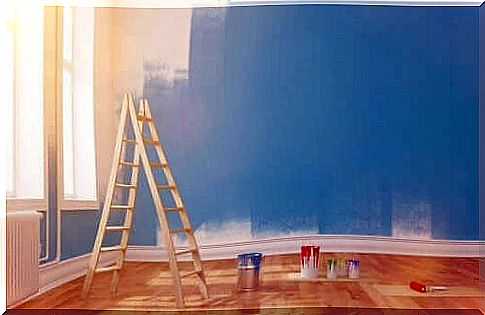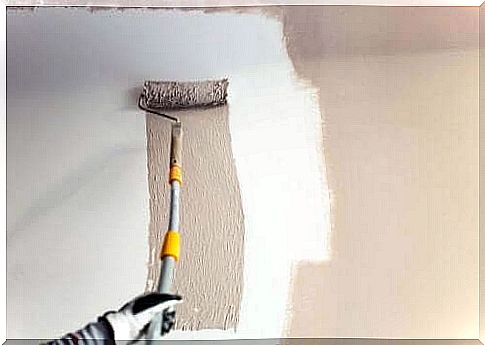5 Techniques For Painting Your House

Painting your home, whether it’s inside or out, is a decision that you need to think carefully about. Of course, it’s not something you do every day, so it’s important to make sure you’re happy with the choices you make.
It makes sense that the first thing to think about is the color. The color depends, among other things, on:
- your personal taste.
- the furniture you have in your house.
- the environment around your home.
Then it’s time to choose from the many techniques for painting your home. We’ll tell you a little about each of these techniques so you can make an informed choice when the time comes.

5 techniques for painting your house
1. Blur effect
Without a doubt, one of the most elegant styles that you can choose to give any room a unique touch is the blur effect technique. To achieve this effect, you have to do what is known as ‘rag rolling’. It consists of the following steps:
- Wear gloves during all steps.
- Wrap a cloth and soak it thoroughly in white spirit.
- Rub the cloth over a wet wall and watch the areas you work with the cloth lose their color. The whole thing gets blurrier.
There is another way to achieve a similar blurry effect. For this way you will need two colors of paint, a mixing bowl, a paint roller, newspaper and some plastic. It must be the same colors but in different shades. Then follow these steps:
- Paint the wall in the color you want to emphasize the most, be it the light or dark shade.
- Wrap the paint roller with plastic, apply some of the second shade from the mixing tray and wipe off any excess with newspaper.
- Also roll some of the other shade on the wall so that you get lighter and darker shades on your wall as desired.
2. Linear effect
This is definitely a departure from the classic style, but it can give your room an elegant look. When it’s finished you will have very thin vertical lines on your wall so that you can hardly see the background color.
Although this is a casual style, you should try to draw the lines neatly to get the effect you want. It is very easy to reach. These are the steps to follow:
- Paint your walls in the primary colors you want in the room.
- While the paint is still wet, use a wicker broom to draw the lines.
- Always apply the broom’s bristles to the wall from top to bottom, never in the opposite direction.
3. Embossed Paint Rollers

This is a great way to create relief on your walls. You need a special roller with a ready-made design. These were very popular many years ago, when wallpaper was still very expensive and inconvenient to use. After you’ve chosen the design, follow these steps:
- Paint the walls in a background color first. If the original paint is still in good condition, you can leave it as is. However, remember that once you’ve applied the relief, you can’t change the background without erasing everything again.
- The relief you add should be painted in a bold color that stands out. Use the special roller to apply the relief on the walls.
- Completely immerse the paint roller in the paint and remove excess paint with newspaper.
- Paint the wall from top to bottom and, if desired, also from left to right.
- Try not to leave too much space between the relief drawing so that you get a continuous effect, unless you want this to be different.
General advice for painting your house
Chances are you already have these things in mind, but some basic advice never hurts, whatever technique you choose for painting your house:
- Cover your furniture to protect against spills.
- Start painting at the top, closest to the ceiling.
- Test the color and other effects before applying directly to the wall.
- Paint in a well-lit and ventilated area.
- Keep in mind that the paint will look different when it dries.
- Choose quality paint and varnish as much as possible.
- Keep in mind that choosing cheap paint will actually be expensive in the long run.
- Let each coat dry for at least six hours before applying the next coat.
Now that you know a little more about home painting techniques, it’s time to get started! If you can’t do it yourself, a professional painter can help you make sure you get the results you’ve always wanted.









